
Potential Privatization of Provincial Ferry System
In 2021, Premier Furey engaged Moya Greene, a well-known advocate for privatizing public services, to chair the Premier’s Economic Recovery Team (PERT). So it’s no surprise that PERT’s 2021 report recommended monetizing (also known as privatizing) provincial government assets.
On February 1, 2022, the provincial government announced it would be conducting a market sounding with respect to ferry services for the island portion of Newfoundland and Labrador. It invited input from “… communities, businesses, the unions representing ferry workers, and social enterprises to explore joint solutions to make the province’s ferry services more efficient.” According to government, the two Labrador routes aren’t included in the process as there are already long-term contracts in place with private-sector operators for those routes.
Tell your MHA No!
You can send an email

Market sounding could be part of privatization process
What exactly is a market sounding? Based on government’s news release, you might assume it is just a fancy term for public consultation. In fact, it’s a tool used in the Public-Private Partnership (P3) process.
According to the World Bank:
The market-sounding process provides a government with an opportunity to cross-check its thinking about a project with that of private-sector specialists including contractors, lenders, and equity investors. It gives the private sector an essential opportunity to deliver feedback on how the packaging and scope of the project could be developed to ensure private sector participation and improve competition. It may also give useful insight into the likely level of market interest, ensuring a better fit between the outcomes required by the public sector and those that the private sector can deliver.
So the market sounding process is not about what the people of Newfoundland and Labrador need – it’s about what the private sector needs to make decisions about buying our ferry service.
SOURCES:
Government of Newfoundland and Labrador. Dept. of Transportation and Works, et al. (2022. Feb. 1). Provincial government beginning market sounding for joint solutions for ferry services. [Press release]. Via https://www.gov.nl.ca/releases/2022/ti/0201n03/
Farquharson, E., et al. 2011. How to engage with the private sector in public-private partnerships in emerging markets. World Bank. Washington, D.C. Via https://openknowledge.worldbank.org/handle/10986/2262
Private-sector ferry operators receiving massive subsidies
There are 12 intra-provincial ferry routes in Newfoundland and Labrador – 7 of which are already operated by the private sector. In 2020-21, every ferry route in the province received a provincial government subsidy in excess of 90% with the exception of one – the Strait of Belle Isle route. The ferry on the Strait of Belle Isle, which is operated by the private sector, received a 85.7% government subsidy.


oGovernment assuming many risks for private operators
So while the private sector may operate 7 ferry routes, it is still taxpayers who pay most of the bills. And if the contract between the provincial government and Labrador Marine Inc. (which operates the Strait of Belle Isle ferry) is anything to go by, taxpayers also assume many of the risks since government protects Labrador Marine Inc. against inflation, rising fuel costs, and crossings cancelled because of bad weather.
The private sector couldn’t operate ferries in Newfoundland and Labrador without those subsidies because government also sets fares and establishes crossing schedules.
In effect, the only sense in which there are privatized ferry routes in Newfoundland & Labrador is that there are private-sector ferry operators who generate profit from 7 ferry routes. Without government subsidies, none of these private operators could stay in business without giant fare increases and massive cuts to services.
Privatization of BC coastal ferries resulted in fare increases, service cuts
And Newfoundland and Labrador is not alone. In 2003, the BC government created a ‘private corporation,’ B.C. Ferries Inc., to get the debt-ridden Crown Corporation that operated its coastal ferry service off its books and to absolve itself from responsibility for mistakes or unpopular actions (like service cuts).
While in theory the B.C. Ferries Commission calls the shots, in practise the provincial government still sets fares, determines service levels, and pays massive subsidies. In fact, in 2018 the BC government recognized the coastal ferry services as part of its highway system.
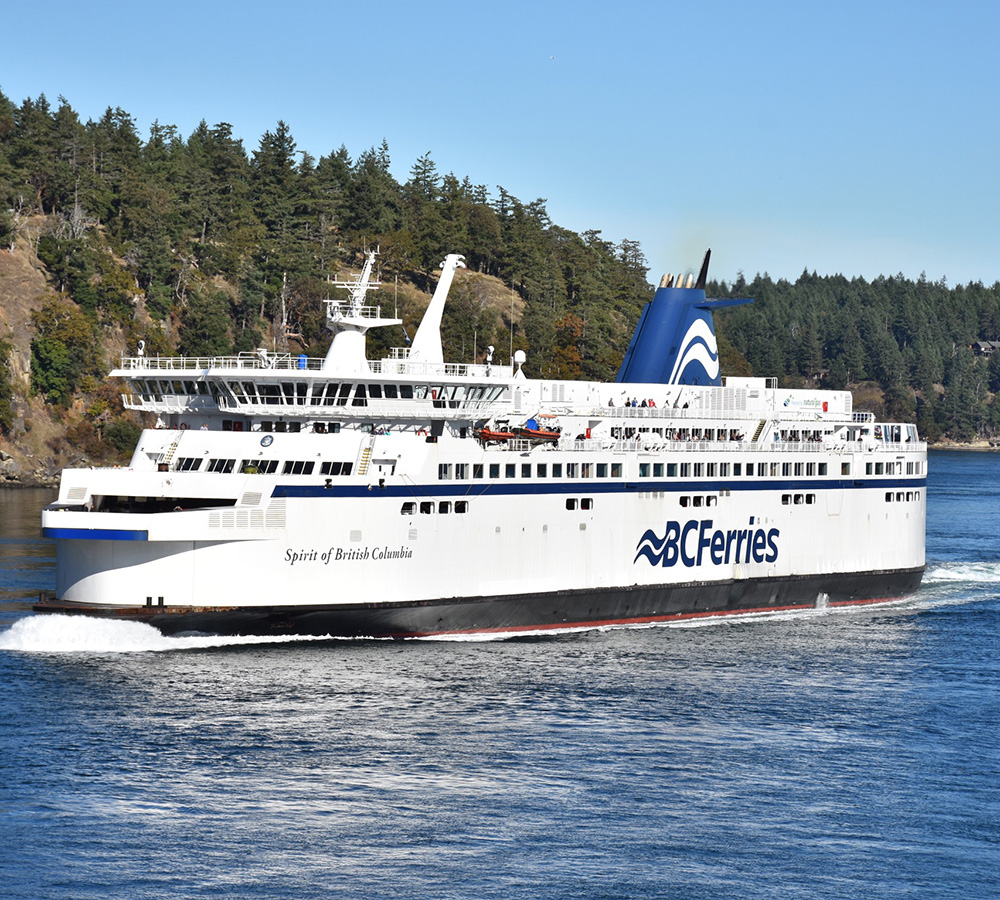
What has happened since BC ‘privatized’ its ferry system?
- In the 15 years following privatization, subsidies almost doubled from just over $100 million to just over $200 million.
- Six years after privatization, fares had increased by 50% – a much higher rate than the Consumer Price Index.
- Six years after privatization, all attempts to contract out routes had failed.
- Six years after privatization, BC Ferries Inc. had taken on $1.2 billion in long-term debt.
- In response to cuts to northern routes, a report concluded the cuts endangered the northern BC economy and that the economic benefits of the service far outweighed its cost.
- And in 2021, BC Ferries couldn’t find mariners to fill vacancies because of a global shortage, resulting in the cancellation of some crossings.
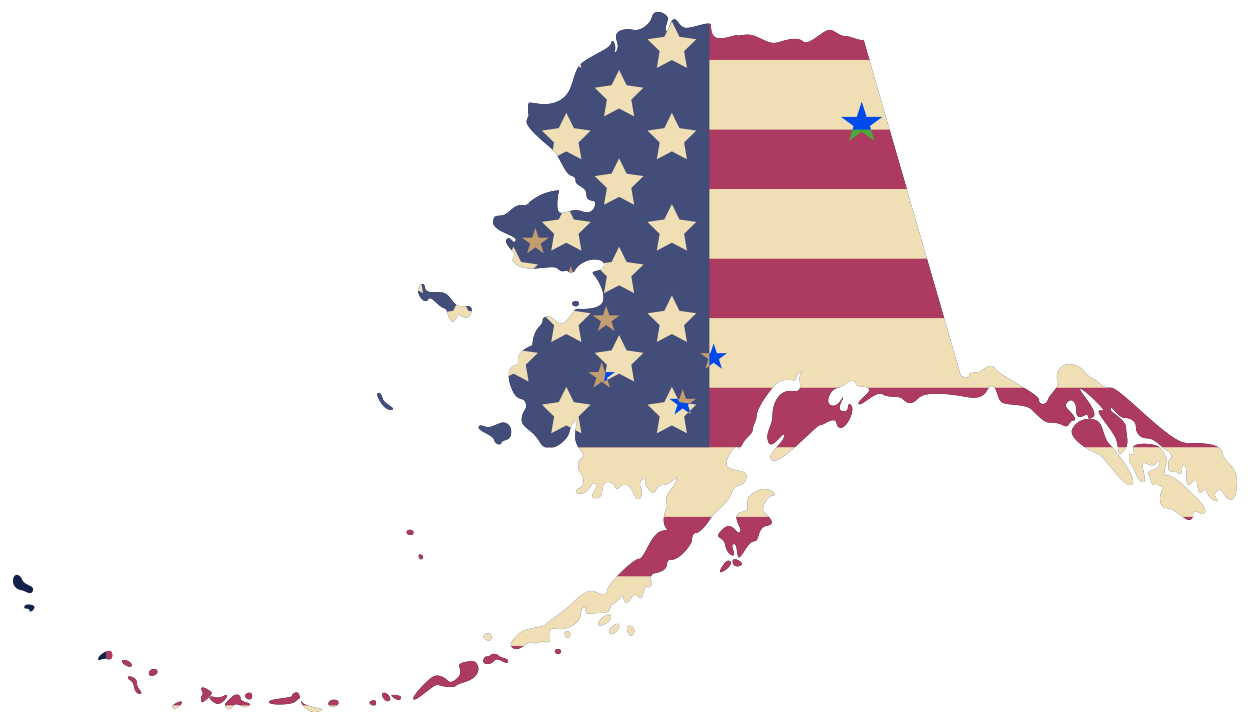
Report for Alaska state government concludes privatization of ferry system ‘not feasible’
The situation isn’t unique to Canada. In 2019, the State of Alaska faced massive cuts to public funding of its public ferry system. A government-funded study of privatizing its ferry system looked at 11 different options. The study concluded privatization wasn’t feasible as long as government continued to make decisions about minimum levels of service. According to the study, “The only buyer that might be willing to accept the assets would resell them … [for scrap, etc.] instead of providing ferry services.”
Newfoundland & Labrador’s Intra-Provincial Ferry Service
Newfoundland & Labrador’s intra-provincial ferry services currently provides services on 12 runs – 5 of which are operated by the public sector and 7 by the private sector. The public sector also operates a ‘swing’ vessel that fills in for other ferries that are out of service for either scheduled or unscheduled maintenance and repairs.

Private sector ferries also heavily subsidized
The provincial government pays to operate the public-sector ferries, and it heavily subsidizes the private-sector ferries. Government receives the revenue for fares from both the public- and private-sector ferries. But with the exception of the privately operated Strait of Belle Isle ferry, which last year received an 85.7% subsidy, all ferries – both public and private – received a subsidy in excess of 90.0%.
In addition to operating the swing vessel, which is used when other vessels are undergoing maintenance and repairs, the public sector operates the ferries on the following routes:
- Bell Island – Portugal Cove
- Ramea – Burgeo – Grey River
- Little Bay Islands – Long Island – Pilley’s Island
- Brendan’s – Burnside
- Fogo – Farewell – Change Islands
While the private sector, under contract to the provincial government, operates the following ferry services:
- Gaultois – Hermitage – McCallum
- Rencontre – Pool’s Cove – Bay L’Argent
- Francois – Grey River – Burgeo
- South East Bight – Petite Forte
- Barbe – Blanc Sablon (Strait of Belle Isle)
- Black Tickle – Cartwright -Rigolet – Goose Bay – Makkovik – Postville -Hopedale – Natuashish – Nain
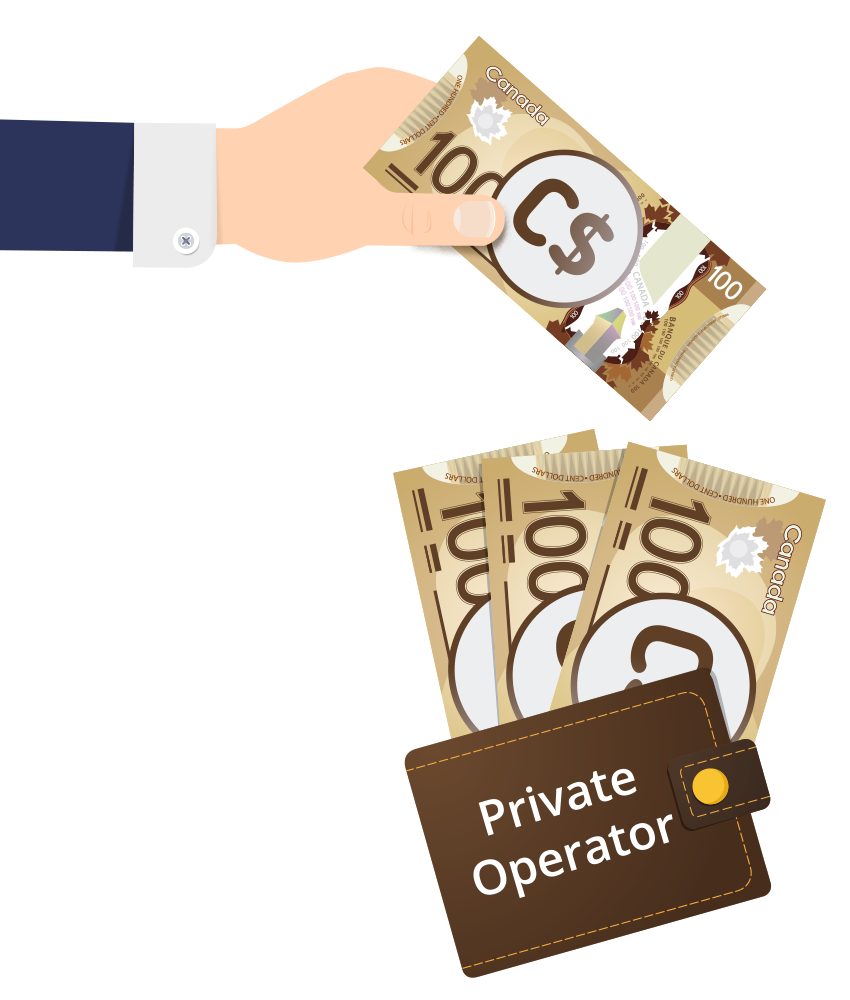
Who owns the ferries and employs the crew?
Ferry vessels operated by the public sector are owned by the provincial government. Their crews are employees of the provincial government. The government is responsible for all associated costs (e.g., fuel, maintenance, insurance, refitting) and keeps all revenue generated by the sale of tickets.
Private-sector operators own the vessels on the ferry services they operate. Crews on those vessels are employees of the private-sector operator. The Government of Newfoundland & Labrador has a contract with the private-sector operator that sets out things like the schedule and ticket prices. The private-sector operator is responsible for providing a vessel that meets the government’s requirements. It is responsible for vessel maintenance, insurance, refitting, providing and operating the booking system, providing food service (where appropriate), and so on. The government receives the revenue for ticket sales, and the private-sector operator retains the revenue from food service (if any). The government pays the private-sector contractor a vessel (at-sea) daily rate and a shore-based daily rate. The government also covers the cost of fuel.
Many intra-provincial ferries in the province operate on a reduced schedule during the winter, with Labrador ferries (aside from the ferry on the Straits of Belle Isle) ceasing operation in the winter.
Both public- and private-sector ferries lose a lot of money
The table below shows the costs associated with operating Newfoundland & Labrador’s intra-provincial ferry service in fiscal year 2020-21. Even a cursory glance will show that revenue from ticket sales came nowhere near meeting the cost of operating either of the ferries. Ferries operated by the private sector – just like those operated by the government – can only function because of substantial subsidies from the provincial government.
Should the private sector be forced to cover the cost of operation through ticket sales, it wouldn’t survive. Ferry users are unable to pay anything near to the amount required to make the intra-provincial ferries self-supporting – let alone being able to pay enough for a private-sector ferry operator to generate a profit.
Government sets the fares because it knows the ferries are a public service. In 2020-21, all 5 of the ferry services operated by the public-sector received subsidies totaling more than 90% – but so did 6 out of the 7 ferry services operated by the private-sector. The exception, St. Barbe – Blanc Sablon, received a 85.7% subsidy.
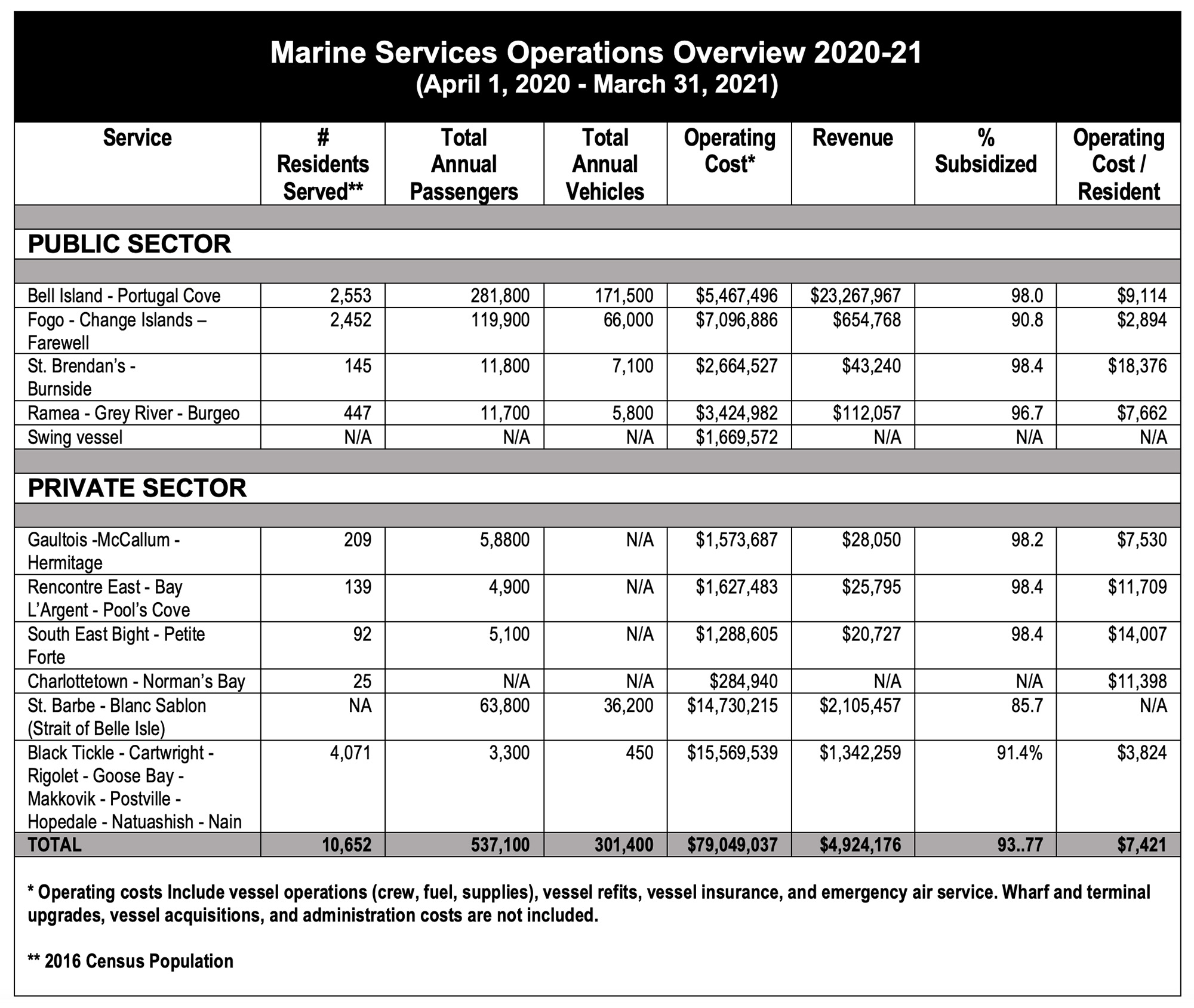
SOURCE:
Dept. of Transportation and Infrastructure. (2022, Feb.) Market Sounding for Joint Solutions in the Provision of Newfoundland and Labrador Ferry Services. Government of Newfoundland and Labrador. Via https://www.gov.nl.ca/ti/files/marine-market-sounding-joint-solutions.pdf
A case study: The Strait of Belle Isle ferry service
Examining what is known about the current contract to operate the Strait of Belle Isle ferry service reveals a great deal about the relationship between our provincial government and private-sector ferry operators.
The process of finding a private-sector operator starts with the provincial government’s issuing of a request for proposals (RFP). In the case of the St. Barbe – Blanc Sablon (Strait of Belle Isle) service, the government issued an RFP in 2018 and received only one proposal. Thus the contract was awarded to that company – Labrador Marine Inc.
Labrador Marine received 85.7% subsidy from provincial government
In the first year of the contract, Labrador Marine Inc. carried 94,100 passengers and 45,200 vehicles. The cost of operating the service for that year was $15,218,188. Labrador Marine collected $3,118,732 through the sale of tickets, which it remitted to the government. Thus the service lost $12,088,456. The government in effect provided Labrador Marine Inc. with a 85.7% subsidy for providing the ferry service across the Strait of Belle Isle. And according to the contract, Labrador Marine Inc. gets to keep the revenue from food services offered on board. No wonder the vessel’s signage identifies it is part of the provincial government’s ferry service – government (taxpayers) are the single largest source of revenue for Labrador Marine.
Highlights of government’s contract with Labrador Marine
You can read the portion of the contract released in response to a request for access to information here, but these are the highlights:
- Government and Labrador Marine signed a 12-year contract with the right to renew for 5 years – or any part thereof.
- Government sets the fares and the crossing schedule.
- Fees received by Labrador Marine from government increase annually by 3% or the Consumer Price Index – whichever is less. In other words, government protects Labrador Marine against inflation.
- Labrador Marine’s annual cost of service charged to government (its subsidy) is $13,350,670. This is made up of the daily vessel rate ($10,239,100 / year), a shore-based daily rate ($1,679,000 / year), and a daily fuel rate ($1,432,570 / year).
- Government gets the revenue from fares, but Labrador Marine gets the revenue from food service.
- Government assumes the risks associated with fluctuating fuel prices.
- Government assumes the risks associated with crossings cancelled because of bad weather.
SOURCE:
Government of Newfoundland & Labrador, Department of Transportation & Works. Access to information request COR/2019/01764
What happened when BC privatized its coastal ferry service?
Up until 1977, British Columbia’s coastal ferry service was the responsibility of the province’s Department of Highways. At that time BC Ferries, a crown corporation, was created to assume control.
The creation of B.C. Ferries Inc.
In 2003, B.C. Ferries (a crown corporation) was in debt. The provincial government announced it would be reorganized into a private corporation. The BC government enacted the Coastal Ferry Act to make privatization possible. The result was British Columbia Ferry Services Inc. (still referred to by everyone as BC Ferries).
The BC government also established the British Columbia Ferries Commission to regulate fares and service levels on 24 saltwater routes. The Commission is supposed to be independent of both the provincial government and of BC Ferries Inc. The Commissioner sets a ceiling or ‘price cap’ on the average level of fares that BC Ferries can charge. The goal in setting the price cap is to balance the interests of ferry users with the interests of taxpayers while protecting the financial sustainability of BC Ferries.
BC Ferries offers ferry service under a 60-year Coastal Ferry Services Contract with the Province of British Columbia. The contract is reviewed and updated every four years.


B.C. Ferries Inc.’s current subsidy exceeds $200 million
Through this contract, the government pays BC Ferries a defined annual subsidy or ‘service fee’ in return for making a specified number of ferry sailings on specified routes. In the early days, the maximum annual value of the subsidy was $106,000,000. The current version of the contract sets that annual value at $194,045,882, but even that amount has been exceeded.
The 2012 Coastal Ferry Amendment Act allows the Ferries Commission to conduct a review of one or more aspects of BC Ferries’ operations. In theory, the purpose of performance reviews is to hold BC Ferries accountable and increase public confidence that the company is operating efficiently, making wise use of its resources, and operating in a way that keeps ferry fares as low as reasonably possible.
The Commission accepts public suggestions about how the performance, service quality, efficiency, or productivity of BC Ferries could be improved. The Commission can choose to launch a probe based on such information.
Reactions to privatization
In December of 2002, the Canadian Centre for Policy Alternatives warned that privatizing BC Ferries would result in the ferry system having to pay GST (as a crown corporation it was exempt), increased cost of borrowing (up 0.6 to 1.25 percentage points over what the provincial government pays), and render the provincial government “… unaccountable for its bad and unpopular decisions.”
In 2009, six years after privatization, independent BC newspaper The Tyee reported fares had risen by roughly 50%.
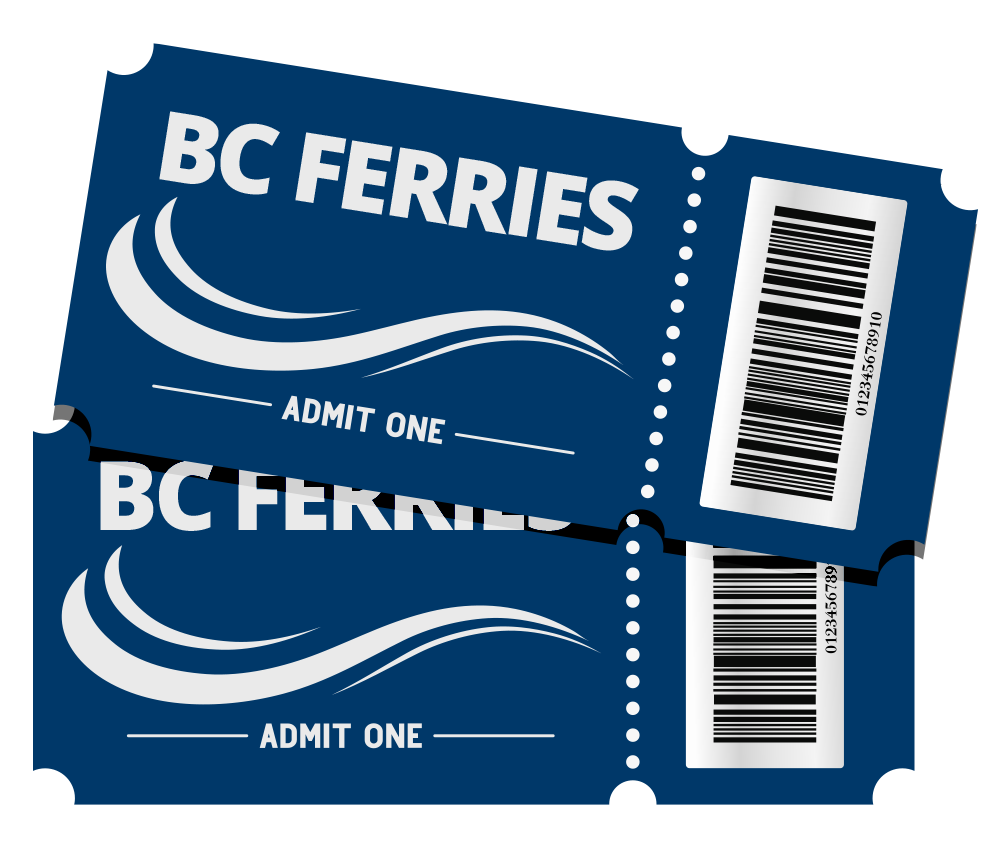

Government’s plan to suppress plan’s opponents
Also in 2009, someone leaked the BC government’s communications plan for privatizing the ferry service to The Tyee. The plan’s goal was to suppress “… controversy generation by opponents …” of the plan.
The plan identified the following possible public objections:
- Steep increases in fares
- Cuts in services
- Foreign ownership (especially US ownership)
- Concern the ferry operator would no longer be accountable to ferry users and the voting public
Part of the government’s goal was to shield itself from blame by the public when something went wrong with the very service. Government also felt the public would be happy to see that debt off its books.
Government’s plan was to get out in front of the announcement by having ‘friendly’ media provide coverage in advance of the announcement. The Vancouver Sun, the Province, and the Times Colonist all ran positive stories prior to the announcement – stories that included the key messages set out in government’s communications plan.
The story also reported that after six years, attempts to contract out routes had failed, BC Ferries had taken on $1.2 billion in long-term debit, and it had bought several new vessels that used much more fuel than the ones they replaced.
Ferries must be operated as part of highway system
Eleven years after the ‘privatization’ of B.C. Ferries, provincial media are still pointing out that: “… calling B.C. Ferries a private corporation does not make it one no matter how many times you say it. The corporation must be brought back under the government umbrella and operated as part of the provincial highway system as the public service it is.”
According to the Times Colonist, it was the provincial Transportation Minister who recently announced that the provincial government would proceed with cutting ferry costs by eliminating some round-trip sailings and cancelling free passes for seniors.
It also pointed out that if the ferry service were actually a private corporation, it would cut unprofitable routes or rise fares to make a profit. That can’t happen because coastal and island communities depend on the ferry service for their survival – just as they do in our province.


B.C. Chamber of Commerce weighs in
In its 2013 report on the ferry service, the B.C. Chamber of Commerce called on government to “maintain affordable rates to protect the interests of ratepayers, users and communities.”
The Chamber also pointed out that the major ferries were profitable, that smaller ferries like those that serve the Gulf Island and Sunshine coast contribute significantly to their operating costs, and that the northern routes would not be profitable any time soon.
According to the Chamber “[The northern ferries] investment is made for the good of the province as a whole, and the total cost of operating these routes should be paid for by an operating subsidy.”
Union of B.C. Municipalities says government should acknowledge ferries as an extension of highway system
In a 2011 presentation to the B.C. Ferries Commissioner, the Union of B.C. Municipalities said the provincial government should “acknowledge that ferries are an extension of the provincial highway system, integral to connecting all B.C. communities and as such, need to be funded and administered accordingly.”

Survey predicts widespread damage to northern B.C. economy
In 2014, an article in the Vancouver Sun opened as follows:
Another day, another dismal report on the looming economic disaster that B.C. Ferries’ policy of fare hikes, fuel surcharges and draconian service cuts imposes on coastal British Columbia. The latest is from the North Coast, where the city of Prince Rupert commissioned an economic survey of what the unintended consequences are beginning to look like for business across the region.
According to the survey’s results, the region should expect “… serious and widespread damage” to the northern B.C. economy.
The report also found, “There has been no review of economic or social impacts [by the province] with regard to lost jobs, lost accessibility, and indeed lost municipal or provincial taxation revenue as a result of the cuts.”
It also determined that the economic benefits of the ferry service in the north “… far exceed the cost of operating the service …” and they run much deeper and much farther afield.
A 2016 letter to the editor of the Vancouver Sun continued in the same vein: “… B.C. Ferries, privatized in 2003, has downgraded service on all of the northern runs to the determent of the coastal economies.” The writer went on to say the privatization of B.C. Ferries is summed up in a bumper sticker that says, “B.C. Ferries Sinking Coastal Economies.”
2018 review of BC ferry service
In 2017, the Government of BC issued Terms of Reference for a comprehensive operational review of its coastal ferry services. The resulting report was released in June of 2018.
Just like in Newfoundland & Labrador, every day ferries operated both by BC Ferries and smaller local providers ply the waters off BC’s coast. While most of these sailings are operated by BC Ferries, there are also eight unregulated ferry routes serviced by contracted operators who are funded by the provincial government. These operators are responsible for providing service to smaller, more isolated communities, including several First Nations.
The original plan for a “privatized” BC Ferries anticipated that service on particular routes would be contracted out. But after 15 years, and despite numerous attempts, efforts to contract out ferry service on these routes have been unsuccessful.

According to the report:
Since 2003 when the Coastal Ferry Act was passed and BC Ferry Services Inc. was incorporated as a regulated company independent of the provincial government, a series of service cuts, sky rocketing fare increases, and issues like executive compensation and building vessels outside Canada have been the topic of public debate.
In the three years leading up to the report, demand increased – and BC Ferries generated healthy net revenues (not to be confused with profits). Overloads, sailing waits, and capacity constraints became a concern. And yet, BC Ferries continued to require an annual subsidy from the BC government that hovered around $200 million.
The federal government also provides BC Ferries with an annual inflation-adjusted grant for the west coast ferry service of about $30 million per year. It has recently started to provide grants for capital projects.
According to the report, many people felt the answer to these various challenges was to operate ferries as a direct provincial government service – a view the provincial government did not share.
BC Budget 2018 recognized BC Ferries as part of the provincial highway system and provided funding to reduce fares on minor routes by 15%, freeze fares on major routes, and restore the 100% discount for seniors from Monday to Thursday. This fare affordability initiative was cost-shared with BC Ferries.
Since most of the report was completed before the release of BC Ferries’ 2017-18 Annual Financial Statements, its analysis is based on 2016-17 data. But according to the author, the trends for 2017-18 were consistent with the previous few years – an increase in vehicle and passenger traffic as well as strong net earnings. The company generated consolidated net earnings of $59.9 million in 2017-18 after a year of record vehicle traffic and the highest levels of passenger traffic in 20 years. And yet, they still required a massive subsidy from the BC government.
The report’s examination of historical trends showed that fares and provincial government funding had risen consistently since 2003. Fares increased at a much higher rate than the provincial Consumer Price Index for most of the preceding 15 years.
Annual provincial government funding for BC Ferries now exceeds $200 million per year. These funds are provided under the terms of the Coastal Ferry Services Contract, which stipulates the particular routes and services the company must provide. Provincial funding takes the form of a service fee as well as funding for specific social programs such as medical transport.
The report concluded that a publicly funded, legislated, and regulated coastal ferry service is in the public interest because it:
- connects and supports communities.
- brings families together
- serves diverse passenger needs
- helps build and strengthen the economy
- moves goods reliably
- supports numerous economic sectors such as agriculture and tourism
The Coastal Ferry Act also gives the Commissioner a mandate to encourage BC Ferries to take a ‘commercial approach’ to delivery of ferry services. As the report pointed out, a commercial approach has the potential to be at odds with the primary role of the regulator, which is to balance the interests of ferry users and taxpayers with the financial sustainability of the ferry operator.
Some other recommendations from the report:
- Establish an independent advisory council to provide feedback about the ferry system as a whole (there are already ways to provide feedback about local ferry issues)
- Improve BC Ferries’ engagement with front-line workers regarding new vessel design and operational issues
- End the practice of providing a special pensionable salary to the CEO after retirement
- Permit local governments to make optional contributions to local ferry needs on a voluntary basis
Just one year later, the Capital Daily reported that “What really drove fares into overdrive, however, was the corporation’s semi-privatization in 2002.” They went on to provide the following example: Since the Crown Corporation was dissolved in 2003, taking a car and driver to Tsawwassen has risen the equivalent of $14.
Global shortage of skilled mariners
And it’s not as if the skilled mariners working on publicly operated ferry services will have no choice but to take jobs with corporate owners should Newfoundland and Labrador’s provincial government decide in favour of privatization. In 2021, B.C. Ferries was struggling to hire 100 skilled mariners. According to its president and CEO, “Unfortunately, the global shortage means qualified mariners are very difficult to find.” In fact, B.C. Ferries has had to cancel crossings due to staff shortages.
According to Capt. Philip McCarter, associate dean of BCIT’s marine department, new graduates are immediately snapped up. And once a mariner acquires experience, others in the sector will actively try to poach them from their employers. McCarter says, “Shipping companies are hungry for them. Incentives become important, not just salaries but work-life incentives.”
Many U.S. states sticking with public ferry systems
Even in the U.S., the bastion of small government and free enterprise, many state governments are finding that privatization isn’t a solution to the challenges their ferry services face.
A preliminary report on a study funded by the Alaska Department of Transportation, released in January 2020, found that privatizing the state’s ferry system is “not feasible if minimum levels of service are also stipulated.”
According to the report:
No business owner would accept all Alaska Marine Highway System (AMHS) assets with the intent to provide services as the system currently operates, since it would not be able to do so and earn even a modest rate of return to account for the risk. The only buyer that might be willing to accept the assets would do so with the intent of reselling them for a profit (such as for scrap) rather than providing ferry services to AMHS communities.
The study, conducted by Northern Economics, examined 11 different options that ranged from full privatization to mixtures of private-public partnerships and public corporations. It notes that simply raising fees and cutting costs would likely be counter productive.to the end goal of making the ferry system sustainable on little government funding. “Realistically it is more feasible to recognize that the significant cost reductions needed to reduce or eliminate the subsidy would also result in lower levels of services and lower levels of revenues.”
You can read the complete study here.
SOURCES:
https://www.bcferrycommission.ca/regulations-probes/probes/
Fuller, S. (2002, Dec. 1). BC Ferries restructuring will increase costs and reduce accountability. Canadian Centre for Policy Alternatives. Via https://www.policyalternatives.ca/publications/commentary/bc-ferries-restructuring-will-increase-costs-and-reduce-accountability
MacLeod, A. (2009, Feb. 20). B.C. Ferries losing money faster, ridership down. The Tyee. Via https://thetyee.ca/Blogs/TheHook/BC-Politics/2009/02/20/FerryThirdQuarter/
MacLeod, A. (2009, March 5). BC Ferries’ Spin Plan Exposed: Secret strategy to control public debate as company went private. The Tyee. https://thetyee.ca/News/2009/03/05/FerrySpin/
(2014, February 7). Editorial: Stop pretending on B.C. Ferries. Times Colonist. https://www.timescolonist.com/editorials-archive/editorial-stop-pretending-on-bc-ferries-4605224
Hume, S. (2014, March). Stephen Hume: Northern ferry route cuts threaten tourism across the province. Vancouver Sun. Via https://vancouversun.com/opinion/columnists/stephen-hume-northern-ferry-route-cuts-threaten-tourism-across-the-province
Goresky. (2016. July 25). Northern routes suffer from services cuts. Letter to the editor. Vancouver Sun. Via https://www.pressreader.com/canada/vancouver-sun/20160725/281625304662865
Redlin, B. (2018, June 30). Connecting coastal communities: Review of coastal ferry services. Via https://www2.gov.bc.ca/assets/gov/driving-and-transportation/reports-and-reference/reports-and-studies/ferries-marine/20180630-review-coastal-ferry-services.pdf
Kearney, C. (2021, Aug. 28). B.C. Ferries struggles to attract qualified mariners amid global shortage, employee poaching. CBC. Via https://www.cbc.ca/news/canada/british-columbia/bc-ferries-struggles-to-attract-qualified-mariners-amid-global-shortage-1.6132625
Here’s how much B.C. Ferries’ fares have risen since 1960. (2019, Oct. 4). Capital Daily. Via https://www.capitaldaily.ca/news/bc-ferries-ferry-fare-increase-british-columbia
Brooks, J. (2020, Jan. 15). Ferry privatization won’t work on most routes, say state-funded report. Anchorage Daily News. Via https://www.adn.com/alaska-news/2020/01/15/state-funded-report-concludes-ferry-privatization-wont-work-for-most-routes/
Buxton, M. (2020, Jan. 15). State finally releases ferry system study, finding privatization is ‘not feasible.’ The Midnight Sun. Via https://midnightsunak.com/2020/01/15/state-finally-releases-ferry-system-study-finding-privatization-is-not-feasible/
